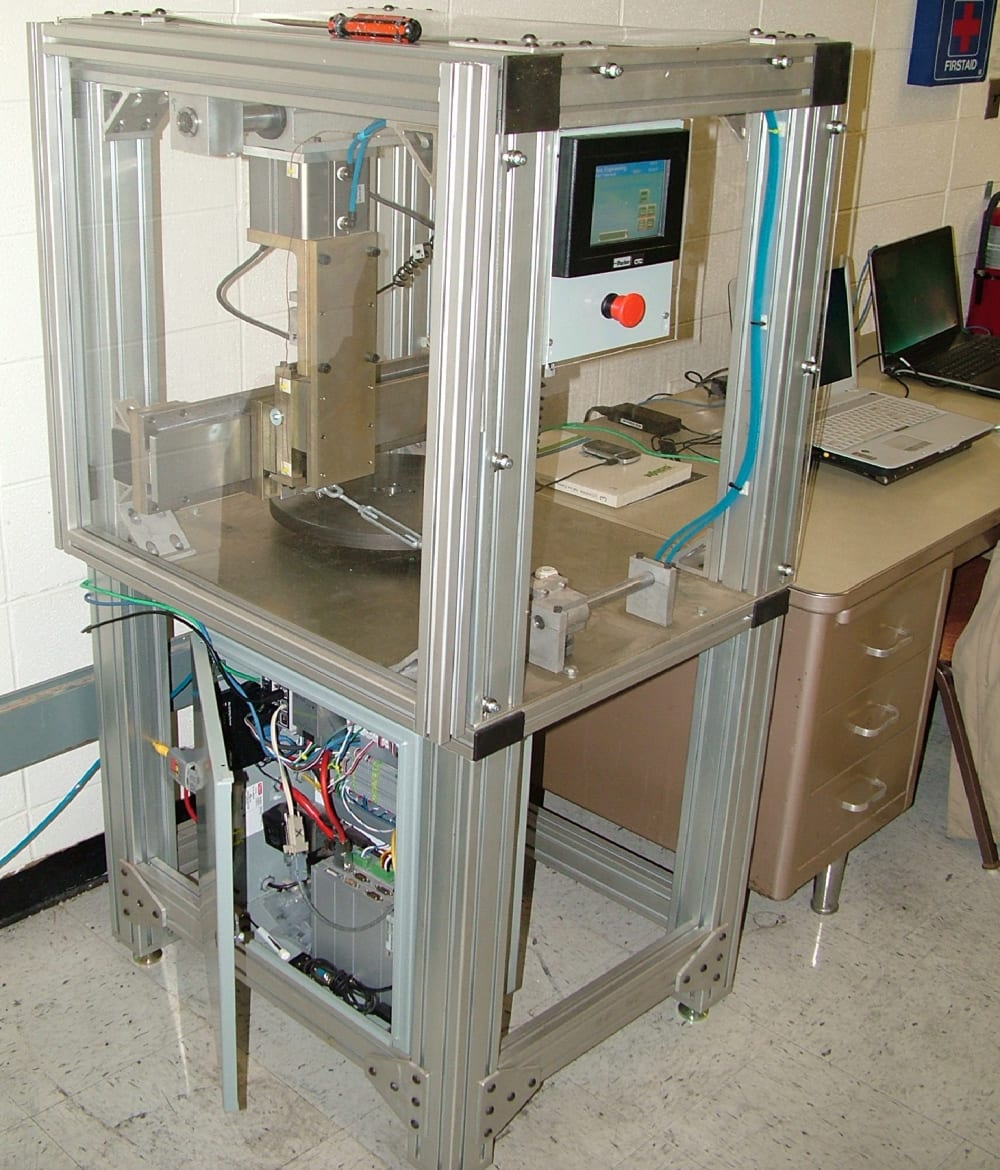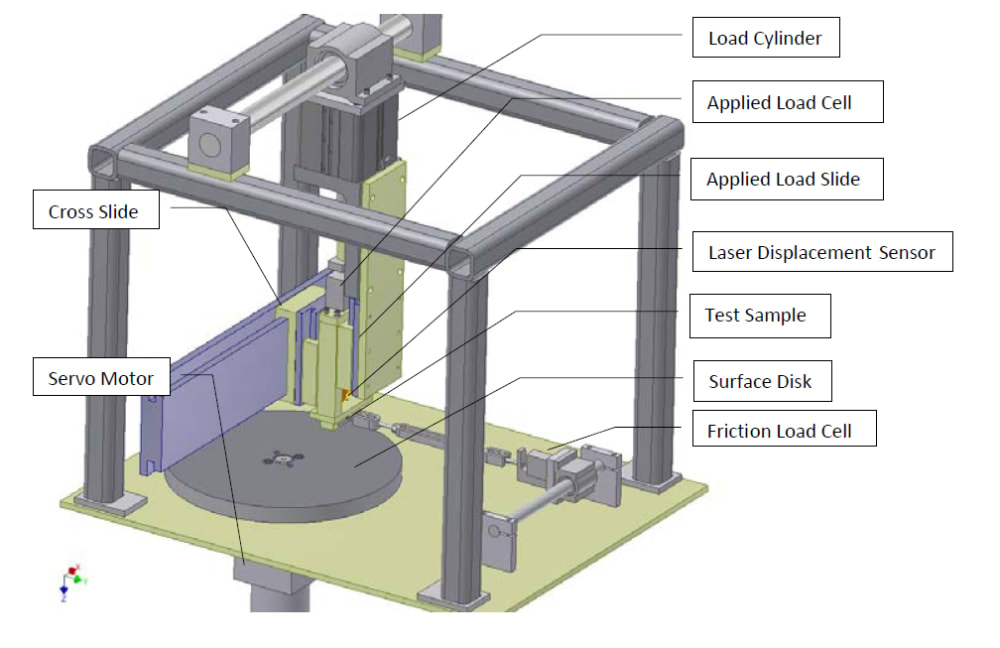The Problem
Friction is the world's single biggest waste of energy. New polymeric and nano-composite bearing material “recipes” promise substantial friction reducing solutions. However, their development and application are often hindered by current tribological (the study of lubrication, friction and wear) test systems, driven by three recognized issues:
• Long test time: Due to measurement limitations, it can take a test duration over 200 hours to assess tribological properties at a single pressure (P) and sliding velocity (V) combination.
• A flawed assumption in application models concerning wear rates being proportional to a constant PV. Long test time makes gathering the multiple PV combination data for a better model a commercial challenge.
• Single PV test capabilities of current systems. Sequencing through multiple combinations requires a separate set-up for each, further exacerbating time and labor costs.
New System Design Objectives
• Achieve dynamic (real-time) wear measurement at a resolution well beyond current system capabilities.
• Create the “intelligence” to determine when a reliable wear rate has been achieved. Beyond this point, continued testing would be wasted time. .”
• Automate sequencing through many PV combination tests requiring no technician involvement except for initial set up and end of test operations.
How it works:
The system places a known load on a test sample, pressing it against a precisely speed controlled rotating disk. A laser triangulation system measures wear at a resolution of 10 nm. Wear, friction, and temperature are continuously monitored. When the rates of change in these variables become constant, the system is said to be “steady state,” at which point the system automatically initiates tribological data recording. Proprietary algorithms continually assess the data to determine the point at which a specific PV combination test is “done.” Proprietary machine controls then automatically index to the next PV test. This process is repeated until all pre-programmed tests are completed or sample failure has been detected.
The Uses and Markets
The primary users are:
• Bearing Material Suppliers
• Testing Laboratories
• Research Facilities
These entities work to satisfy demand from engineers who want new materials to increase the efficiency and service life of systems that slide, pivot, or rotate. This system has the potential to substantially outperform over 1,000 existing test machines (in the USA). Competitive demands on users can create pressure to upgrade to this new system. Additional demand is likely from new users who have been unsatisfied with limitations of current approaches. It is estimated that the USA is about 25% of global market potential.
Manufacturing and Costs
The new system is manufactured in a manner similar to currently available testing systems. Unit costs are directly comparable to existing machines. The primary differences are in the embedded programming and the ultra-high resolution laser module.
Benefits
With this new test system, the speed at which new energy saving friction reducing materials are created can be substantially accelerated. The improved PV model enables engineers to better select bearing materials for efficiency, reliability, mass and cost.
Like this entry?
-
About the Entrant
- Name:Robert Adams
- Type of entry:individual
- Software used for this entry:AutoDesk Inventor, PTC MathCAD, CoDeSys
- Patent status:pending





